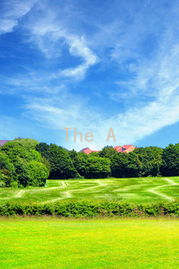From Chemistry to Connection: The Role of Scientific Research in Modern Romance
In the evolving landscape of modern romance, the intersection between science and relationships has gained significant attention. From dating apps utilizing algorithms to match potential partners based on compatibility to psychological studies examining attraction, scientific research has become a cornerstone in understanding what fosters connection between individuals. This article explores how various aspects of scientific inquiry can enhance our approach to love, helping us transition from mere chemistry to genuine connection.
One of the key areas of research is the psychology of attraction. Studies have shown that physical appearance plays a pivotal role in initial attraction, but as relationships develop, factors such as shared values, beliefs, and emotional intelligence become increasingly important. Understanding these dynamics can help individuals navigate their romantic pursuits more effectively. For instance, those looking to cultivate a lasting bond might prioritize conversations that delve deeper than surface-level interests, helping to reveal compatibility on a more substantive level.
Moreover, the concept of attachment styles—rooted in decades of psychological research—provides critical insights into romantic relationships. Recognizing whether one has a secure, anxious, or avoidant attachment style can illuminate patterns in how they approach intimacy and conflict. This awareness enables individuals to communicate their needs and boundaries more clearly, fostering healthier and more resilient partnerships. Engaging in open discussions about attachment styles with potential partners can pave the way for deeper understanding and empathy.
Another fascinating area of exploration is the role of neuroscience in love. Research has indicated that the brains reward system activates similar pathways for love and addiction, highlighting the euphoric sensations that accompany infatuation. However, as the relationship matures, the brains focus shifts from passionate love to more profound feelings of attachment and companionship. This knowledge can help partners manage expectations, recognizing that the intense highs of early romance may evolve into a steady, deeper bond that can also be fulfilling.

Additionally, scientific studies on communication habits shed light on the importance of effective dialogue in relationships. The “Four Horsemen” model by John Gottman identifies detrimental communication patterns—criticism, contempt, defensiveness, and stonewalling—that can erode relationships. By being aware of these destructive behaviors, individuals can consciously cultivate healthier interactions. Practicing active listening, expressing appreciation, and pursuing constructive conflict resolution strategies are all backed by research and can transform the dynamics of a relationship.
Finally, the impact of technology on modern romance cannot be overlooked. Dating apps often employ algorithms that analyze user data to generate potential matches, promoting a form of compatibility based on preferences and behavioral patterns. However, researchers caution that while technology can facilitate connections, it is essential for individuals to remain vigilant about authenticity and emotional depth. As we embrace new forms of communication, striking a balance between digital interaction and face-to-face engagement is crucial for nurturing genuine connections.
In conclusion, the pursuit of love in the digital age is significantly informed by scientific research, providing valuable insights into attraction, communication, and emotional connection. By understanding the underlying principles of human behavior and relationship dynamics, individuals can enhance their romantic experiences. Transitioning from chemistry to connection involves recognizing the multifaceted nature of love, fostering open dialogue, and embracing both the exhilarating and stable phases of relationships. As we navigate the landscape of modern romance, science offers tools to better understand ourselves and our partners, ultimately leading to deeper, more meaningful connections.





